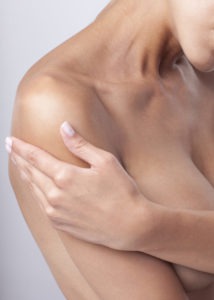
This pressure can interfere with blood circulation to the body tissue and impact function. Compartment syndrome in the hand may lead to severe and increasing pain as well as muscle weakness. Over time, it can lead to a change in the color of the nailbeds or fingers.
In a fasciotomy procedure, the surgeon will place an incision or cut in the hand or arm. This reduces the pressure, lets the muscle tissue swell, and restores blood circulation. The surgeon will also remove any tissue inside the site that is already damaged. This procedure helps prevent any additional damage and reduce in function of the impacted hand.
Board certified plastic surgeon Dr. Bram Kaufman provides hand surgery to patients in Cleveland, Beachwood, Pepper Pike and Lyndhurst, OH, and surrounding locations.
What is Dupuytren’s Disease?
Dupuytren’s Disease (also called Dupuytren’s contracture) is a common condition impacting the hand (and at times the feet).
Hard nodules/lumps appear right underneath the skin in the palm of the hand and at times, form thick cords, which can prevent the fingers from straightening completely.
Treatment Options
While there is no cure for Dupuytren’s, there are various treatments that can be undertaken to remove/destroy the offending cords and straighten the finger(s). They will need to discuss the most suitable course of treatment with the surgeon.
Non-operative treatments include the following:
- Splinting: This has not been shown to be effective, especially in cases of advanced/severe Dupuytren’s.
- Steroid Injections / Collagenase Injections: These injections aim to disintegrate the Dupuytren’s cord through injecting the solution into the hand. Subsequently, the surgeon may manually straighten the impacted finger(s).
Operative treatments include the following:
- Fasciotomy: This involves separating the Dupuytrens cord by making a small incision in the finger/palm/both. It can be performed under local anesthetic.
- Fasciectomy: This involves a surgery where an incision will be placed in the palm (normally a zig-zag pattern), and the cord will be divided, and then removed and the finger(s) will subsequently be straightened
- Dermo-fasciectomy: In case of severe contractures, a skin graft (usually from the upper arm) may be harvested to fill particularly compromised areas of skin in the hand.
What to Expect after the Surgery
Fasciectomy surgery is usually undertaken as a day case surgery under a regional block (where the arm is numbed using an injection) or general anesthesia.
The patient will be sent home with thick dressing to enable the fingers to remain straight.
They will be seen by a physical therapist within three to five days of the surgery, who will take off the dressing and apply smaller ones to allow the fingers to move freely. The therapist will also provide the patient with a splint that is necessary after the procedure to ensure that impacted finger(s) remain straight.
The stitches will be removed 10 to 14 days after the procedure. The patient will need to wear a splint at night for nearly 10 to 14 weeks following their surgery to make sure that while the hand heals, the fingers remain straight.
Cosmetic surgeon Dr. Bram Kaufman receives patients from Cleveland, Beachwood, Pepper Pike and Lyndhurst, OH, and nearby areas for hand surgery.
To learn more about cosmetic treatment and procedures or to schedule a consultation by Cleveland Ohio area plastic surgeon, Dr. Bram Kaufman, please contact us at 1-216-778-2245 or click here.
Now taking new patients in Cleveland OH | Pepper Pike | Beachwood | Lyndhurst and other surrounding areas.
